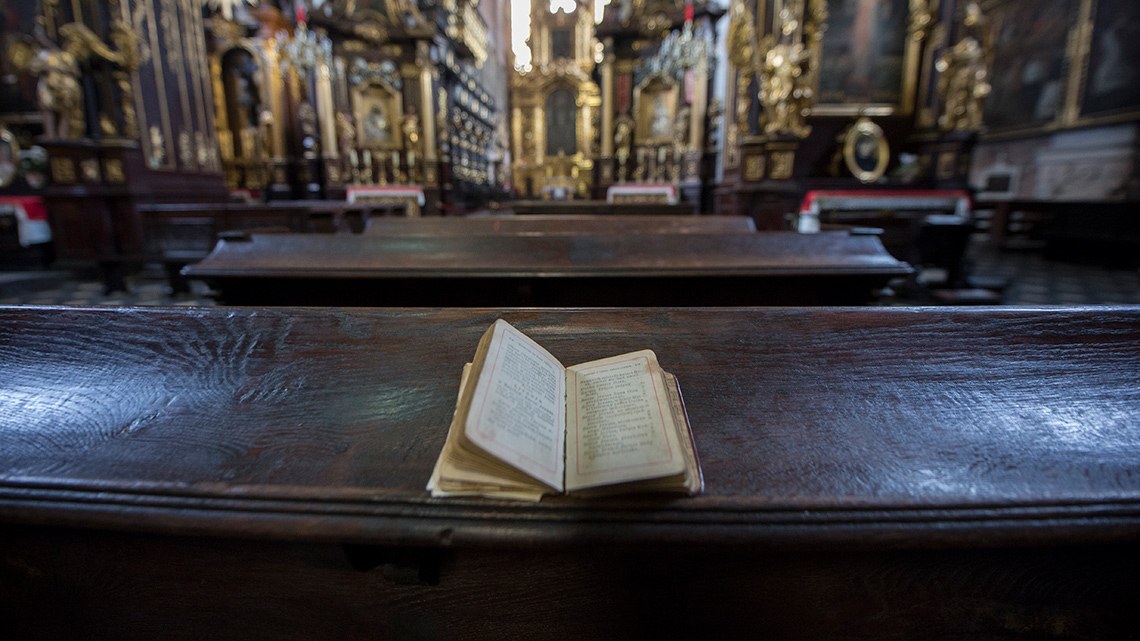The voting process to elect a new Pope.

Voting begins on the first day, when one ballot is held in the afternoon if possible. If the first ballot does not produce a result, there are two ballots each morning and each afternoon until a result is declared.
The Papal Master of Ceremonies hands out voting papers, giving at least two or three to each cardinal. Nine cardinals are chosen by lot for three tasks: three are to be scrutineers, three are to collect the votes of those who are sick and unable to be in the Sistine Chapel but who are nonetheless able to vote, and three are to double-check the counting.
The ballot paper is divided in two: the top half carries the Latin words Eligo in Summum Pontificem (I elect as pope…) and the bottom half is blank for the name to be written in.
The handwriting on the bottom part should not be identifiable as belonging to any cardinal, and the inclusion of a second name will render the ballot null and void. The Master of Ceremonies and others leave, the doors of the Sistine Chapel are closed and the vote begins.
In order of precedence, each cardinal elector holds up his completed ballot paper. He then carries it to the altar and places it in a receptacle. He swears his vote is for his choice and puts the paper onto a plate, which he uses then to drop the voting slip into the receptacle on the altar.
When all votes have been placed in the urn (including the votes of any sick cardinals whose votes have been collected from the Domus Sanctae Marthae), the urn is shaken. A scrutineer takes the votes out one by one, in full view, and puts them into another container, making sure that the number of slips corresponds to the number of voters. If not, the ballot is void.
The scrutineers sit at a table in front of the altar. The first scrutineer unfolds each paper, notes the name and passes it to the second, who does the same. The third then reads out the name that has been written down and the electors can make note of the names and votes. The scrutineers write down the number of votes received by each name and the last scrutineer collects the voting slips by threading a needle through the word Eligo and collecting the slips on a thread which is then knotted. (The slips are burned at the end of the session, together with any notes the electors have made.)
The names are counted and if a name has received two-thirds of the votes, the Pope has been elected. The counting is checked by the third group of three cardinals (the ‘revisers’) who examine both the original voting slips and the scrutineers’ notes. The Chamberlain records the votes in each ballot on one sheet of paper and, after the election, this is given to the new Pope before it is stored in a confidential archive.
If the first ballot does not produce a result, the process is repeated for three days only. After three days of unsuccessful voting, the procedure is suspended for a day to give time for prayer, reflection and informal discussions.
The voting then begins again for a series of seven more ballots. If there is still no conclusion, another pause is taken before a further seven ballots. If this still does not produce a result, one more pause and another series of seven ballots follow. Finally, however, the cardinals are addressed by the Chamberlain about what to do next.